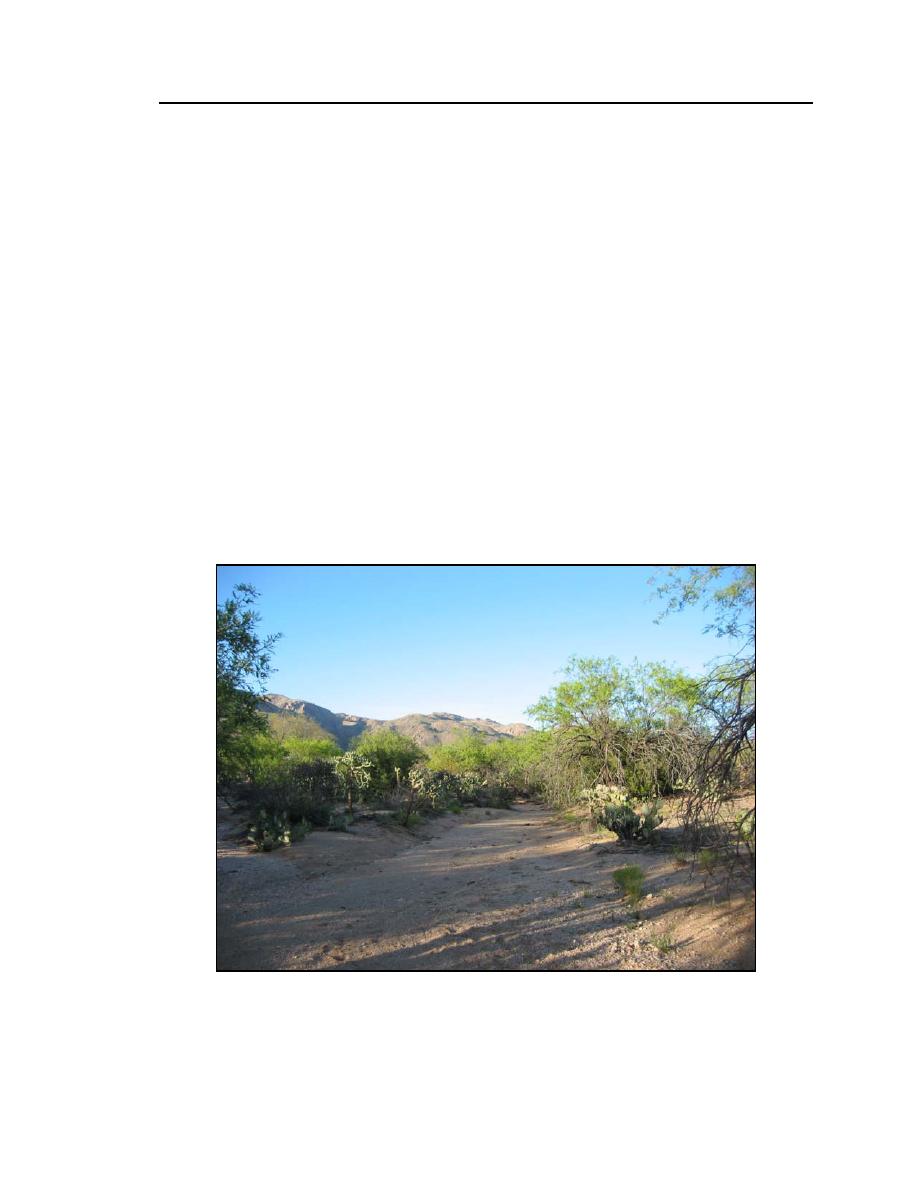
Chapter 4. Vegetation
111
4.7
XERORIPARIAN SYSTEMS
By far, most research on riparian ecosystems in the southwest has focused on
those relatively hydric or mesic wetlands that occur on perennial and intermittent
streams. Such hydroriparian and mesoriparian systems are characterized by
sufficient moisture to support pioneer riparian trees or shrubs and hydromesic
herbaceous species. However, most watercourses in the arid southwest are
ephemeral and support a suite of xeroriparian species whose ecology and
hydrologic relations are poorly understood (Fig. 26). Xeroriparian systems occur
on streams that flow infrequently and where the water table is usually too deep to
be accessible to plant roots. However, minor amounts of infrequently delivered
supplemental moisture can produce detectable vegetation patterns on small
ephemeral streams. Even slightly augmented moisture may allow for greater
overall vegetation volume, height, or stem density compared to upland areas
and/or the occurrence of unique xeroriparian species that are not present in
uplands. Studies of xeroriparian vegetation are complicated by the fact that many
species, including some community dominants, occur in both riparian and
Figure 26. Xeroriparian vegetation along a wash near Tucson, Arizona. The
dominant plants are Prosopis velutina, Celtis pallida, and mixed cacti.



 Previous Page
Previous Page
